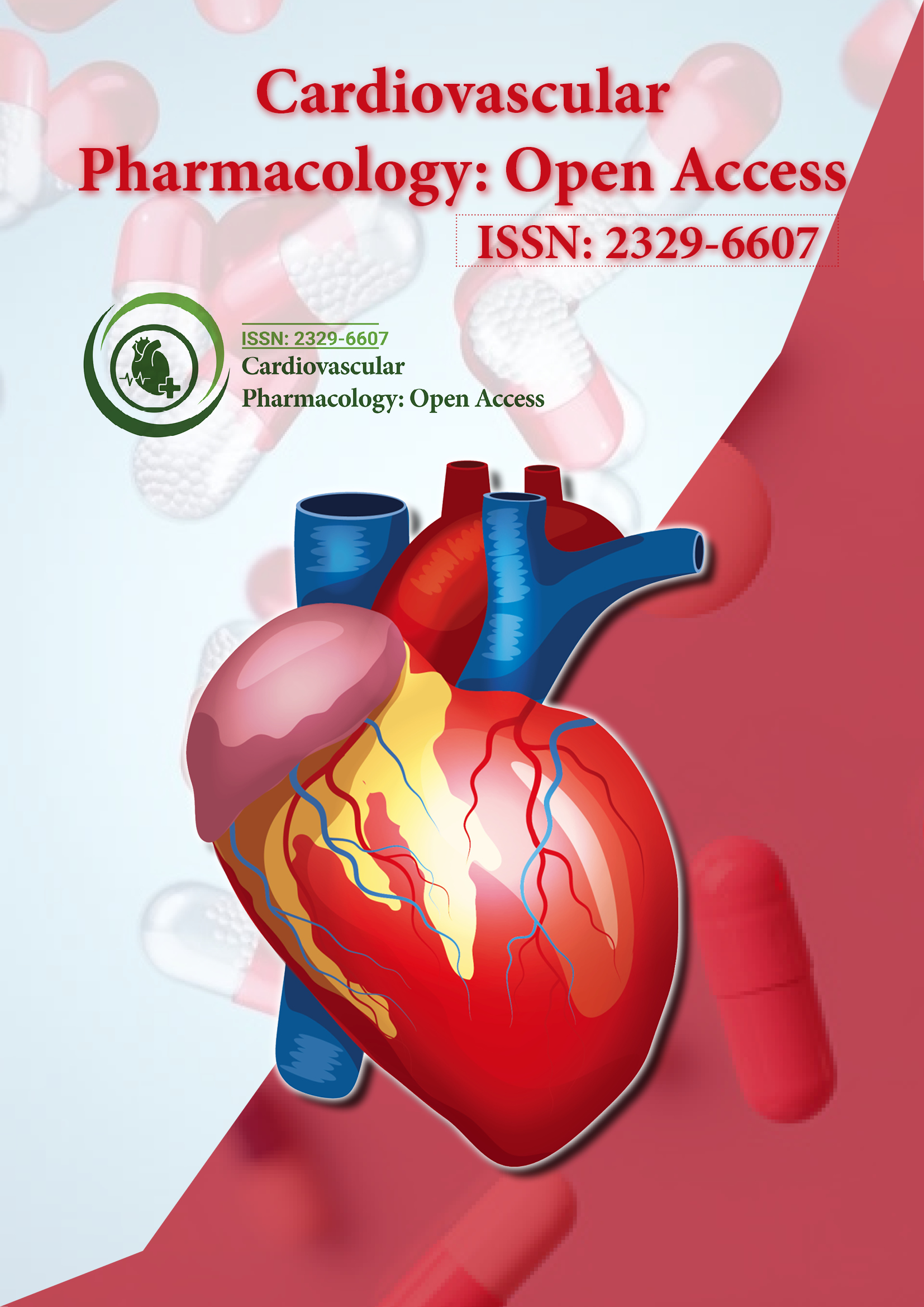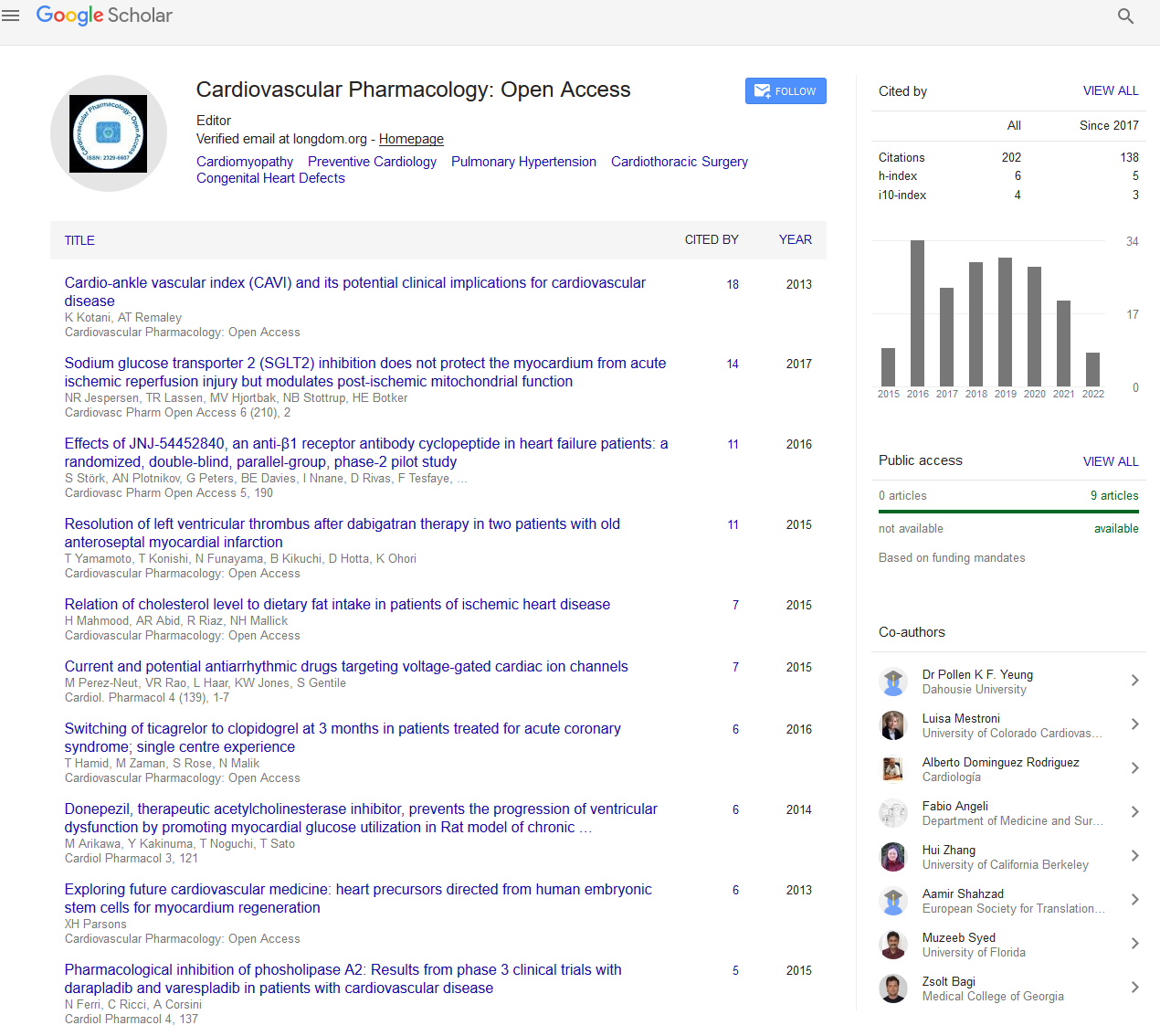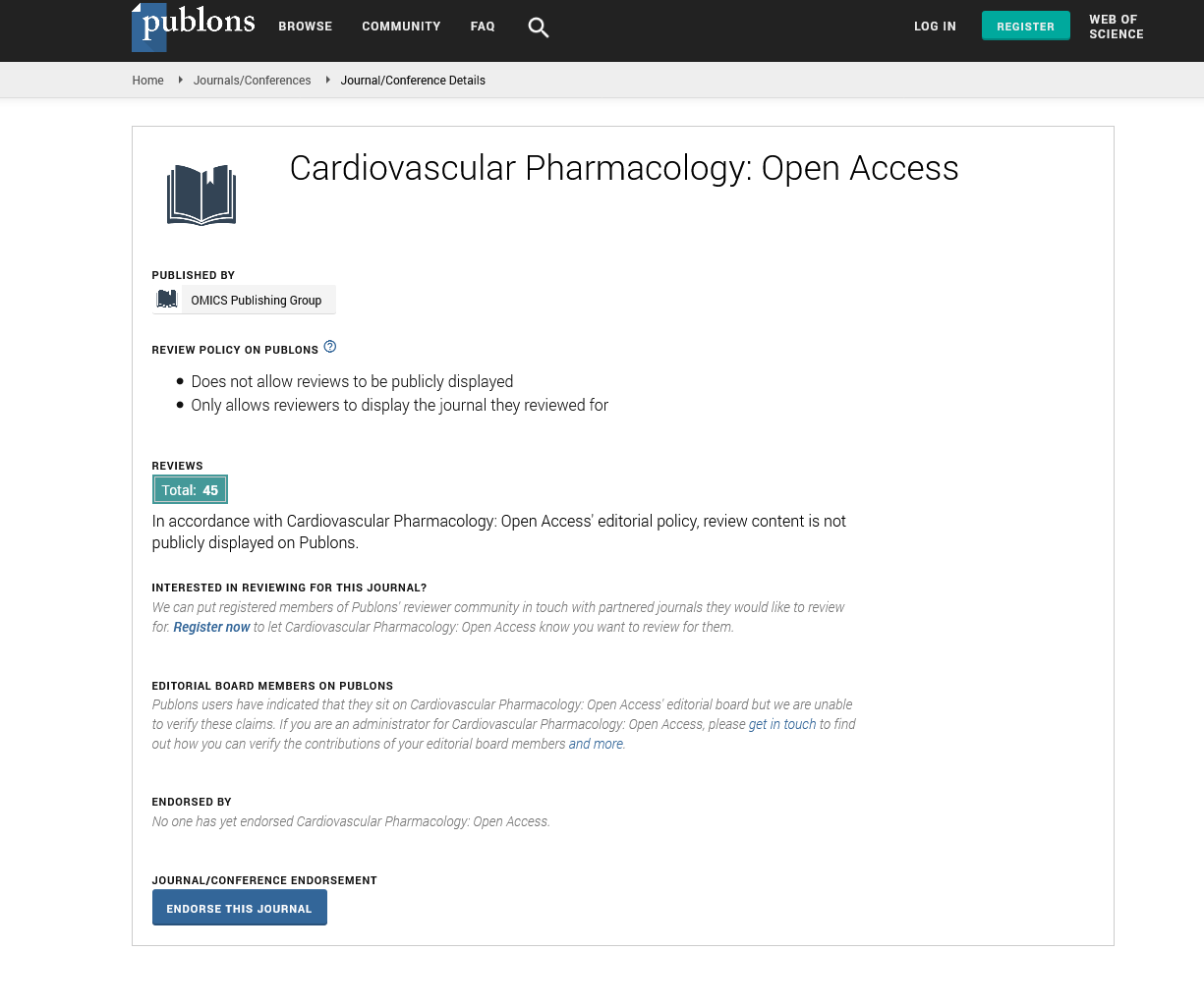Indexed In
- Open J Gate
- Cosmos IF
- RefSeek
- Hamdard University
- EBSCO A-Z
- OCLC- WorldCat
- Publons
- Geneva Foundation for Medical Education and Research
- Euro Pub
- Google Scholar
Useful Links
Share This Page
Journal Flyer

Open Access Journals
- Agri and Aquaculture
- Biochemistry
- Bioinformatics & Systems Biology
- Business & Management
- Chemistry
- Clinical Sciences
- Engineering
- Food & Nutrition
- General Science
- Genetics & Molecular Biology
- Immunology & Microbiology
- Medical Sciences
- Neuroscience & Psychology
- Nursing & Health Care
- Pharmaceutical Sciences
Opinion Article - (2025) Volume 14, Issue 1
Structural and Molecular Ambiguity in AV Nodal Dual Pathways
Richard Evans*Received: 19-Feb-2025, Manuscript No. CPO-25-28934; Editor assigned: 21-Feb-2025, Pre QC No. CPO-25-28934 (PQ); Reviewed: 07-Mar-2025, QC No. CPO-25-28934; Revised: 14-Mar-2025, Manuscript No. CPO-25-28934 (R); Published: 21-Mar-2025, DOI: 10.35248/2329-6607.25.14.423
Description
The Atrioventricular (AV) node occupies a pivotal role in cardiac conduction, serving as the only electrical bridge between the atria and ventricles. While the overall architecture of the cardiac conduction system is well-characterized, the AV node exhibits an intriguing and clinically significant phenomenon known as dual-pathway electrophysiology. This property is commonly observed in patients undergoing electrophysiological studies, yet its full physiological, anatomical and clinical implications remain incompletely understood. Despite decades of research, the duality within the AV node remains an unresolved frontier in cardiac electrophysiology.
The dual-pathway model suggests the presence of two functionally distinct conduits within or around the AV node—one fast and one slow. The fast pathway typically conducts impulses quickly but has a longer refractory period, while the slow pathway conducts more slowly but recovers more rapidly. This interplay is the cornerstone of the most common type of supraventricular tachycardia: Atrioventricular Nodal Reentrant Tachycardia (AVNRT). During AVNRT, a premature atrial impulse may fail to conduct down the fast pathway due to refractoriness and instead travel via the slow pathway, eventually reentering the fast pathway in a retrograde fashion to initiate a self-perpetuating circuit. This arrhythmia mechanism is well-established and radiofrequency catheter ablation targeting the slow pathway is a highly effective treatment.
However, beyond its role in AVNRT, the significance of dual-pathway electrophysiology in broader cardiac function is often overlooked. A critical question emerges: is dual-pathway physiology purely a substrate for arrhythmia, or does it represent a physiological feature with potential regulatory or adaptive roles in conduction modulation? In certain individuals, dual AV nodal physiology is evident without any overt arrhythmias, suggesting that these pathways may serve important but as-yet-unrecognized functions in rhythm control.
Despite clinical acknowledgment of this duality, there is a conspicuous lack of anatomical consensus. Histological and imaging studies have not definitively delineated discrete fast and slow pathways within the AV node. Instead, the AV node is composed of a heterogeneous mix of transitional, compact and lower nodal cells, with overlapping electrophysiological properties. It has been proposed that spatial gradients in connexin expression, ion channel distribution and fibrous insulation may collectively form functionally distinct zones. However, this complexity has made the localization of the slow pathway for ablation more of an empirical art than a precise science.
Genetic and molecular research also remains underdeveloped in this area. Understanding the ion channel composition and transcriptomic profile of cells within the AV node may help define fast and slow pathways at a cellular level. For example, different expression levels of calcium and potassium channels may contribute to differences in conduction velocity and refractory periods. Investigating the role of microRNAs, autonomic modulation and fibrotic remodeling in shaping nodal conduction properties could yield new insights, especially as nodal conduction properties may change with age, disease, or therapeutic intervention.
Clinically, the implications of dual-pathway physiology may extend beyond AVNRT. Heart failure, autonomic dysfunction and aging are associated with alterations in AV nodal conduction and refractoriness. It is plausible that these conditions modulate dual-pathway properties, potentially increasing arrhythmia susceptibility or altering AV synchrony. Furthermore, in patients with atrial fibrillation, dynamic changes in AV nodal conduction influence ventricular response rates, which in turn affect hemodynamic stability and treatment strategies. Thus, dual-pathway physiology may intersect with broader therapeutic domains than previously recognized.
In conclusion, the dual-pathway electrophysiology of the AV node represents more than a mechanism for reentrant arrhythmia—it is a physiological enigma that challenges our understanding of cardiac conduction. Unlocking the structural, cellular and regulatory underpinnings of this phenomenon could revolutionize not only arrhythmia management but also broader concepts of cardiac pacing, conduction disease and even bioengineered conduction systems. Future research must bridge the gap between functional observations and mechanistic insight, using advanced imaging, molecular profiling and computational tools to decipher the architecture of this hidden duality.
Citation: Evans R (2025). Structural and Molecular Ambiguity in AV Nodal Dual Pathways. Cardiovasc Pharm. 14:423.
Copyright: © 2025 Evans R. This is an open access article distributed under the terms of the Creative Commons Attribution License, which permits unrestricted use, distribution, and reproduction in any medium, provided the original author and source are credited.


